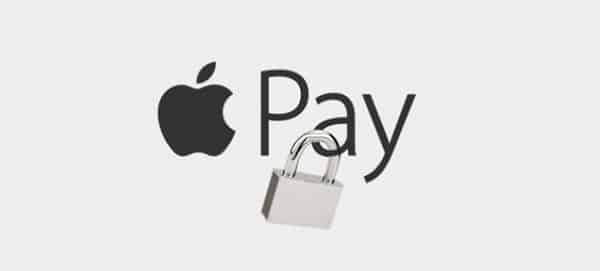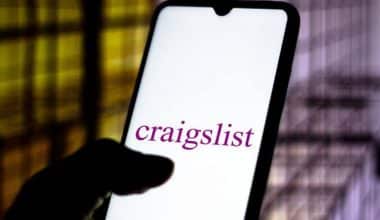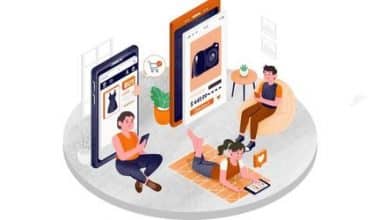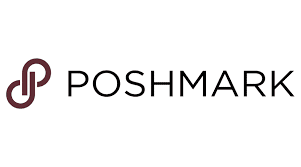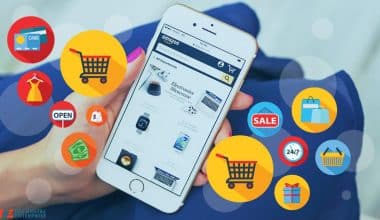Millions of people worldwide already use Apple Pay and I’m guessing you are thinking of joining them too. But here is the question on everyone’s mind, “Is apple pay safe and trusted for all your transactions?” Well, you’ll find that out in the course of this article as well as all you should know about Apple Pay.
Overview
With Apple Pay, you don’t need to carry cash or credit cards around. The convenience of having everything in one app makes it simple to tap and pay while on the go. Although Apple Pay’s evident advantages, there are disadvantages as well. Yet, you might discover that Apple Pay’s advantages outweigh its drawbacks. Also, Apple will undoubtedly upgrade Apple Pay’s capabilities and security over time. In this article we’ll be looking at the questions people are asking, Is apple pay safe to use for debit cards, sellers, and online purchases? We believe that you should carefully consider these questions, whether you are a customer or a business.
Is Apple Pay Safe to use
Compared to using an actual credit, debit, or prepaid card, Apple Pay is more secure. For purchases to be made on your iPhone, Apple Watch, Mac, or iPad, you must use Face ID, Touch ID, or your passcode. Your real credit card numbers are not kept on your device or on Apple systems, and neither is your name or identity shared with businesses.
Neither Apple nor your smartphone will give retailers your actual card number when you pay in stores. Your name, email address, billing address, and shipping address are the only pieces of information the merchant will get when you make an online payment via Safari or an app.
Apple does not save any personally identifiable transaction data when you pay with a debit or credit card. Also, when you use Apple Cash, information is solely saved for regulatory, fraud prevention, and troubleshooting purposes.
Is Apple Pay Safe for Debit cards
Information entered on your device and transmitted to Apple servers using Apple Pay is encrypted when you add a credit, debit, prepaid, or transportation card (where available). The card data is never kept on your device or photo library if you enter it using the camera.
Apple finds your card’s payment network, decrypts the information, and then re-encrypts it with a key that only your payment network (or any companies your card issuer has allowed for provisioning and token services) can use to decrypt it.
Understanding how it works
For the purpose of determining your eligibility to enable Apple Pay, Apple may receive information from you regarding your card, whether specific device settings are turned on, and usage patterns (such as the percentage of time the device is in motion and the approximate number of calls you make each week). In order to enable Apple Pay, check your card’s eligibility, set up your card for Apple Pay, and stop fraud. Apple may also disclose information to your card issuer, payment network, or any other providers permitted by your card issuer.
Your bank’s authorized service provider or your card issuer creates a Device Account Number specific to your device after your card has been approved, encrypts it, and sends it along with other information (like the key used to create dynamic security codes that are specific to each transaction) to Apple. The Device Account Number is kept on your device in the Secure Element, a verified, industry-standard chip made to securely store your payment information. Apple cannot decode the Device Account Number. The card issuer can stop its use on a magnetic stripe card, over the phone, or on websites, unlike with regular credit or debit card numbers. The Device Account Number is not stored on Apple servers or backed up to iCloud in the Secure Element, which is separate from iOS, watchOS, and macOS.
The original card numbers of the credit, debit, or prepaid cards you add to Apple Pay are not kept on file or accessible by Apple. Only a fraction of your actual card numbers, together with a card description, are stored by Apple Pay, along with a portion of your Device Account Numbers. To make it easier for you to add and manage your cards across your devices, your cards are linked to your Apple ID.
Is Apple Pay Safe for Sellers?
When processing payments with Apple Pay, businesses are not given your credit card number, expiration date, or CVV code. It instead generates a unique passcode. Even if a scammer manages to decipher this code, they won’t be able to get access to your money. Also, neither your device nor Apple Pay’s cloud service keeps the details of your credit card.
Is Apple Pay Safe for Online Purchases
Apple Pay employs a device-specific number and special transaction code when you make a purchase. Hence, neither your device nor Apple servers ever save your credit card number. Also, Apple never divulges your card details to retailers when you make a purchase.
Your purchases are kept secret. When you use a debit or credit card to make a purchase, Apple Pay does not store transaction data that can be used to identify you. Also, when you use Apple Cash, information is solely saved for regulatory, fraud prevention, and troubleshooting purposes.
What are the Risks/Downsides of Apple Pay?
#1. Cyberattacks:
In general, Apple Pay is a safe, secure platform that is impervious to hackers, making it a great choice for mobile payments. But, jailbreaking your iPhone removes the security-related software limitations.
Consider your options carefully before utilizing Apple Pay if your iPhone is jailbroken. Your transaction limits could be overridden by hackers, who could then copy your prior contactless payments.
#2. Public Wi-Fi Connections Security Risk
You don’t need an internet connection to utilize Apple Pay because contactless payment transactions are carried out via NFC chips. This is great since you can use it in whatever you want.
But, by default, iPhones automatically scan for open Wi-Fi connections. Hackers and criminals frequently target public networks in an effort to override insecure financial transactions, such as unlawful contactless payments.
If you don’t realize your device is already linked to a public network, you can unintentionally utilize Apple Pay on it. As contactless transactions are instantaneous, this is true. Before making a purchase, few consumers care to check their phone’s signal and connectivity.
#3. Possibility to circumvent contactless limits without permission.
When the iPhone’s Fast Transit mode is active, research from the University of Birmingham reveals Apple Pay’s vulnerability to payment fraud on Visa cards.
In essence, hackers may be able to get around the contactless limitations on tiny purchases. Let’s imagine, for illustration, that you bought a train ticket using Apple Pay. As it requires minimum verification, hackers can override the transaction and reproduce it several times without your knowledge.
Fortunately, these problems are not widespread. You won’t be a victim of this scam as long as you routinely monitor your transactions and payments.
#4. Apple Gathers Enough Personal Information
You must provide many pieces of personal information to use Apple Pay. In addition to the usual information like your name and address, the business will have access to your transaction history, which, if you use it frequently, might be quite a bit.
Apple uses your personal information for marketing even though it doesn’t sell user data (i.e., targeted ads, suggested posts, etc.). If you have any reservations about Apple’s privacy policies, you might wish to stop using Apple Pay altogether.
#5. Only Apple Devices Support Apple Pay
This point is important to note even though it seems rather clear. You must use an Apple device, such as an iPhone, iPad, Mac, or Apple Watch, in order to utilize Apple Pay. As a result, if you decide to go from an iPhone to an Android device, for instance, you won’t be able to access the service.
You stop having access to your Apple Pay wallet on the day you relocate. Since you can use Google Pay to make payments on Android and iOS, Apple’s rival Google does it better. Yet, this is all a result of the way Apple Pay functions (it is a part of Apple’s software). Hence, make sure you’re prepared to fully embrace Apple’s ecosystem before you start utilizing Apple Pay.
The Drawbacks of Apple Pay for Merchants
If you have a store or merchant account, think twice before relying only on contactless payments supplied by Apple Pay. Otherwise, you run the danger of the following happening to your payment system:
#1. New users’ confusion and irritability
150 million Americans use mobile wallets to pay for their costs, according to a Finder survey from 2021; fewer than half of this demographic has Apple Pay installed.
Hence, you can’t assume that every one of your clients would utilize a digital wallet like Apple Pay. You must be ready to provide different payment options.
If you run into clients who are utilizing Apple Pay for the first time, you can also run into some problems. If consumers need assistance making their purchases, you’ll probably have to spend more time checking them out, which defeats the point of Apple Pay: quick, smooth transactions.
#2. Rejecting Transactions Making numerous mobile payments as a result of Card Clash
There is a considerable chance of “card conflicts” with quick-moving contactless payment systems. This problem occurs, frequently with recently introduced contactless technologies, when transactions from two or more payment solutions conflict with one another.
While this isn’t a specific Apple Pay weakness, it is more vulnerable, for instance, if a customer keeps their contactless card on their phone. This may result in multiple payments, payments collected from the wrong source, or payments that are not processed, all of which may result in irksome administrative costs for your company.
Is Apple Pay a good idea?
The question if apple pay is a good idea is solely dependent on the user and what you intend to use it for. Whether it is safe or not, using Apple Pay is undoubtedly safer than using cash. Also, if you activate all of its security features on the app like a tricky passcode, it ought to be safer to use than a bank card.
Will Apple Pay refund money if scammed?
If you fall victim to fraud using apple pay, Apple does not provide refunds. The money that was stolen from the users may, however, be refunded by their banks and credit card companies. Make sure to get in touch with them right away. Below are a few things you can do if you ever get scammed.
#1. Report the transaction.
Peer-to-peer money transfer service Apple Cash does not offer buyer protection. Sadly, this indicates that an Apple Cash transfer cannot be canceled (because you authorized the transfer). But, you can challenge the transaction if you used Apple Pay to send money to a phony business or con artist.
Choose the illegal payment that you want to contest by going to Recent Transactions.
Next select Merchant Name, Merchant Category, or Other Problem under Report an Issue Invalid Merchant Data.
#2. Decline the payment
You can attempt to revoke your payment in the unlikely event that the con artist hasn’t yet received it.
Open iMessage and look for the discussion you had with the con artist to cancel the Apple Cash transfer. Choose Payment. Then, select the payment you want to cancel by clicking Recent Transaction on the wallet app.
If there isn’t a Cancel Payment button, the fraudster may have received the money, and Apple is unable to issue a refund.
#3. Change your passwords, and turn on 2FA
Scammers can control your phone, email, and other devices if they gain access to your Apple ID.
Make sure to change your passwords and security questions whenever you suspect that you have been conned. Choose passwords with a unique combination of letters, numbers, and special characters that are at least eight characters long.
Enable 2FA using an authenticator app to increase security (not over SMS). Sign up for a safe password manager, such as the one that comes with every Aura plan. This will help you keep all of your passwords organized so that you won’t lose or forget them.
Inform your bank that you have been a victim of fraud by contacting them.
By getting in touch with your bank’s fraud department and explaining what transpired, you can lessen the harm that scammers can cause.
You should be able to follow the next steps, which may involve canceling your accounts and opening new ones, with the assistance of the bank and credit card fraud departments. Consider also freezing your credit for further security.
How to stay clear of Apple Pay scams
While you can lessen the harm if you are scammed, it is ideal to avoid being fooled in the first place. By implementing the advice below, you can increase the security of Apple Pay when utilizing the feature:
- Never send money to websites you don’t know.
- Always check payments twice before finishing
- Enquire for specifics from folks (something personal only the person they pretend to be can know)
- Prevent stray money requests from strangers
Is Apple Pay safer than PayPal?
In general, Apple Pay is seen as being more secure than PayPal. Yet, this does not imply that using PayPal is unsafe. It simply implies that, as compared to PayPal, Apple Pay has more security mechanisms in place.
Both Apple Pay and PayPal offer secure payment options, and both have measures in place to protect users’ financial information. However, there are some differences between the two that may impact how safe they are perceived to be.
Apple Pay uses a combination of security features to protect transactions, including Touch ID or Face ID to authorize payments, a unique device number and transaction code for each payment, and encryption to protect users’ financial information. Transactions are also processed using tokenization, which means that the merchant does not receive the actual credit or debit card number, further reducing the risk of fraud.
PayPal also uses a range of security measures, including encryption, two-factor authentication, and fraud monitoring. Users can also enable features such as Seller Protection and Buyer Protection to provide additional security.
Overall, both Apple Pay and PayPal offer secure payment options. However, the choice between the two may depend on individual preferences and the specific use case. It’s worth noting that both Apple Pay and PayPal have been the target of fraud attempts in the past. So it’s important to remain vigilant and take steps to protect your personal and financial information regardless of which payment method you choose.
Conclusion
Apple Pay makes it simple to send money to friends or make purchases. Although Apple Pay has certain drawbacks, overall it is a secure and convenient way to make payments. Following the tips in this article could help you to reduce dangers if security is something that worries you.
For instance, only add to Apple Pay the credit or debit cards you use frequently, and monitor your account activity to make sure there are no unauthorized payments. Ultimately, Apple Pay is a safe method of payment that has a lot of advantages, so you should give it some thought before making your next purchase.
- WEBSITES THAT ACCEPT APPLE PAY: All You Should Know and How It Works.
- DOES BEST BUY ACCEPT APPLE PAY in 2023? (Detailed Guide)
- HOW TO BUY APPLE STOCKS DIRECTLY: A Detailed Guide
- HOW DO YOU USE APPLE PAY: All You Need To Know
- WHAT IS APPLE CASH: Meaning & How It Works
